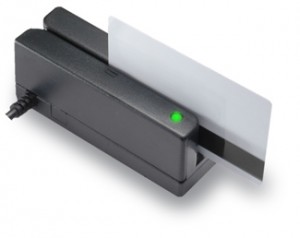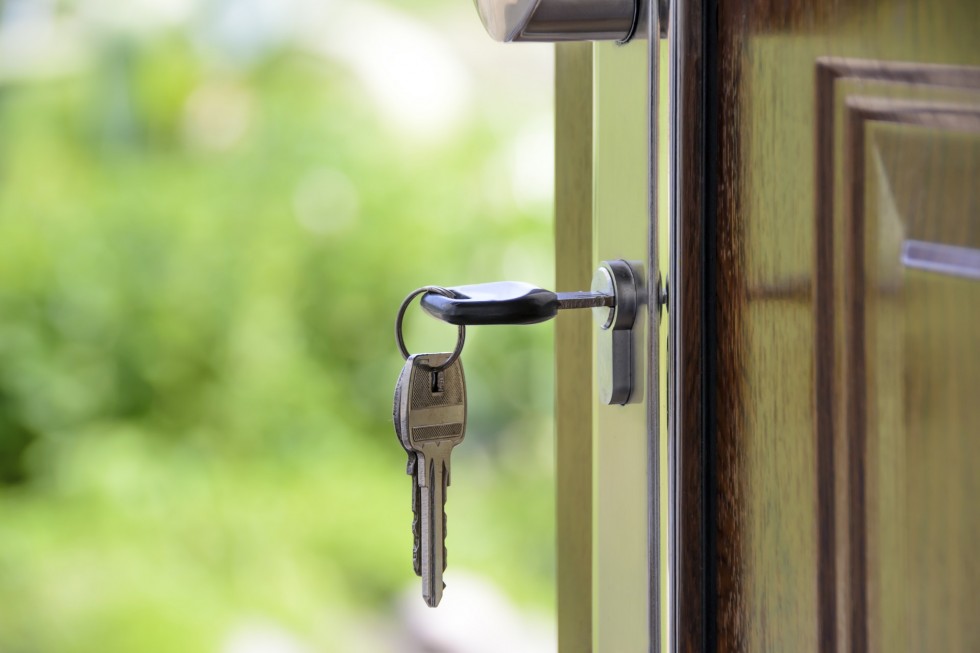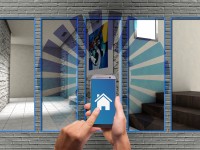Every homeowner wants to feel safe behind the walls of their dwelling so that no one could get access inside it without their permission. However, to ensure an adequate level of security, a mechanical lock opened with a key is no longer enough. In our digital era, an increasing number of homes is being equipped with sophisticated electronic entry control systems. Those provide reliable protection against any kind of intrusion by employing the latest technological achievements. If you are planning to install something similar on your property, we’ve prepared an overview of several options available on the market at the moment.
1. Swipe card door entry system
The most important components of this system are a swipe card, also known as a magnetic strip card, and a card reader. The reader’s head processes the data stored on the card when it is “swiped” through it. If the owner of the card has been granted access to the property, the lock disengages. While swipe card entry control systems are typically installed in places with many comings and goings such as a business building, homeowners can use them to restrict access to various areas within their premises, too, for example, to a swimming pool.
Pros
- Quick cancellation. If you’ve lost your card or it has been stolen, you can cancel it at once. So, the thief will not be able to use your card to enter the house.
- Easy installation.
- Comparatively low cost. You will just need the card reader installed, have several cards for yourself and your family members, and a computer to set up the system.
- Provides audit trails and individual tracking. That way, you will know who has entered your home at a specific time.
Cons
- Can be physically damaged. If something happens to the magnetic strip, it may prevent the card reader from scanning the data. You may have to swipe the card several times until you are granted access.
- Only one security level. Unlike some other entry control systems, where multiple authentication methods are required such as fingerprints and voice, once the card owner swipes it through the reader, the door opens.
- Simple to copy. Criminals can relatively easily retrieve data from a card and use it for their illegal activities.

Source: http://www.access-is.com/acr75_acr76_magswipe_reader.php
2. Electronic keypad
With a keypad lock, you don’t need a swipe card or traditional key. You only have to remember the PIN that will give you access to your home.
Pros
- Different codes for different users. You can set up the system in multiple ways depending on the level of security you require. For example, you can give one code to the adults in your family and another to the kids.
- Integration with larger security systems such as CCTV. That way you will always know who came to your place while you were away.
- Remote access. Some versions of the keypad entry control system allow the owner to access the keypad remotely through a web or mobile app and either block or unlock the door.
Cons
- Another code to remember. That’s an additional burden as your brain already has to store passwords to your numerous web and social media accounts.
- Malfunctions. Like any technology, the electronic keypad may suddenly experience a software issue. Furthermore, there can be a power outage that will block the system. So, professionals recommend connecting the keypad to a backup power source.
- Can be costly. That, of course, is determined by the level of security you want.

Source: https://www.amazon.com
3. Biometric system
This type of system is the toughest from the security perspective. It grants entry access by scanning a person’s eyes, palms, or fingers. You can also program the system to have several layers of verification at once.
Pros
- High security level guaranteed. There are no two people with identical fingerprints or retina patterns.
- Inexpensive maintenance. In contrast to other entry control systems, this one requires almost no care after installation.
- No necessity for keys, cards, or other objects. You just need to put your finger on the scanner and the door will unlock. So, losing the keys is not a concern.
Cons
- Risk of non-identification. While this is very unlikely, the system may fail to recognize the owner (this may happen to 1% of people).
- High cost. As this is one of the most elaborate devices, you will have to pay a handsome sum for its installation and adjustment.
- There must be natural oils in your skin. If you expose your fingers to something like a washing powder, your fingerprint may become blurry and the system will not accept it. It may take a few hours before your fingerprint is visible again.

Source: https://www.amazon.com/
4. Cloud-based access control system
This system allows you and your family members to gain access to your home by using a special application on your smartphones. Technicians install a reader, which is NFC-enabled (NFC or near field communication – working from a distance of several feet). After downloading the application, you should hold your smartphone before the reader, and the lock will disengage. Read more about cloud-based entry control systems here.
Pros
- Easy to install and set up. You just download the app and start using the system.
- Seamless integration with other systems such as CCTV.
- Cost-effective. Since there is no need for keys or complex equipment like that used in the biometric system, this is one of the most inexpensive entry control systems.
- Scalable. You can further decide to limit access to other places within your home, for example, to your kids. In that case, you just need to install another reader and use the same application on your smartphone. With a conventional lock you would need a key to each door separately.
- Security. As smartphones are locked by a password (and many also have biometric protection), even after losing your device no one will be able to enter your home. In addition, the app itself has several security levels. So, breaking it is hard for a professional, let alone a layman.
Cons
- Minor risk of hacking. Still, with all those protective measures in place, a minimal risk of a hacker stealing your data does exist. That’s because the reader can communicate with the smartphone from a long range: around 30 feet. Thus, a criminal could try to intercept the signal. However, that requires expert knowledge and expensive tools. So, this is highly improbable.
- Early stage of the NFC-technology development. Some older smartphones may still be incompatible with NFC. That may entail additional expenses.

While you can install a simple video or audio entry control system in your home or continue trusting your old faithful mechanical lock, we recommend investing your money in one of the systems described above. They don’t have to replace your existing setup, but may just supplement it as an extra level of protection.





